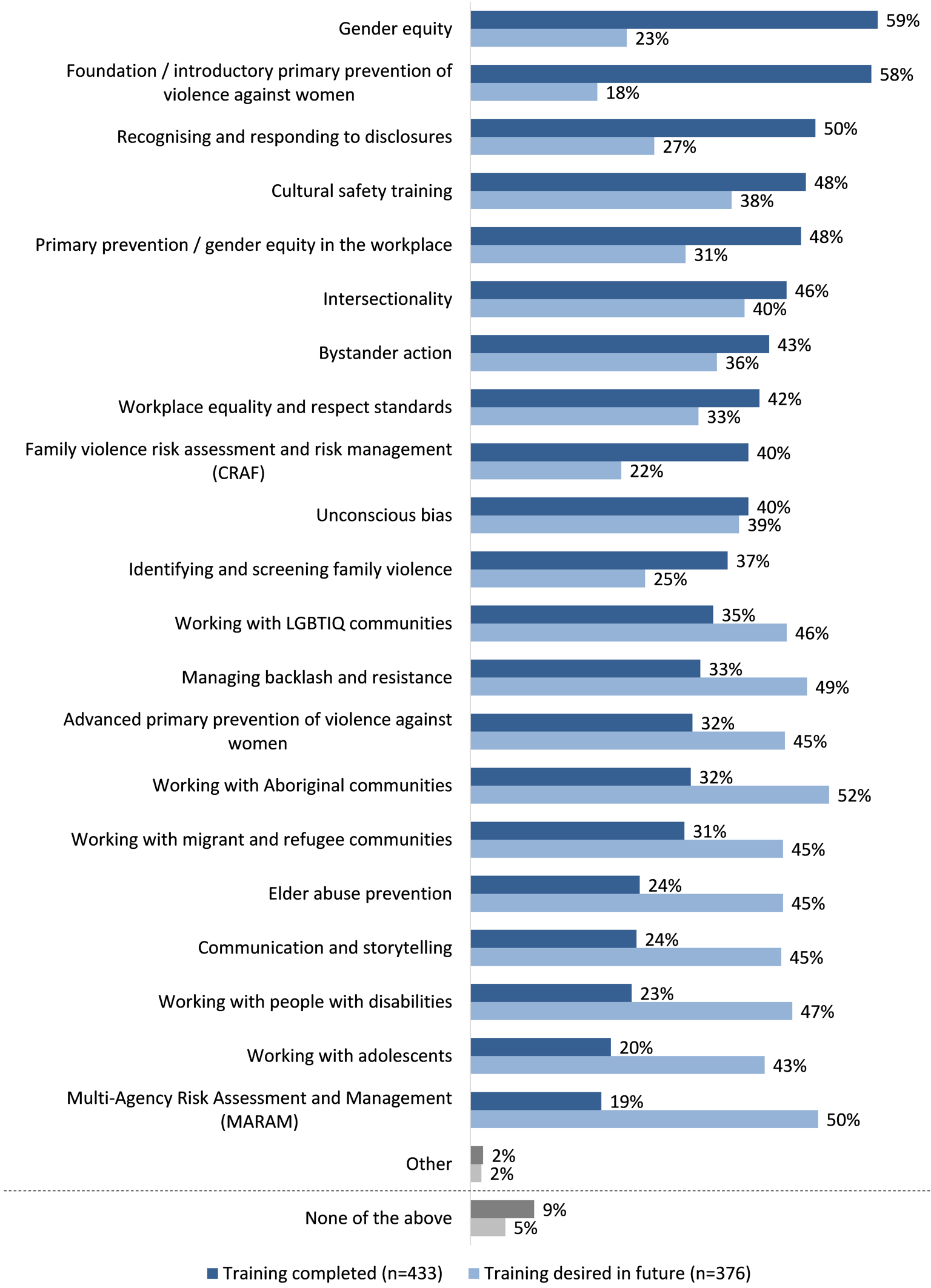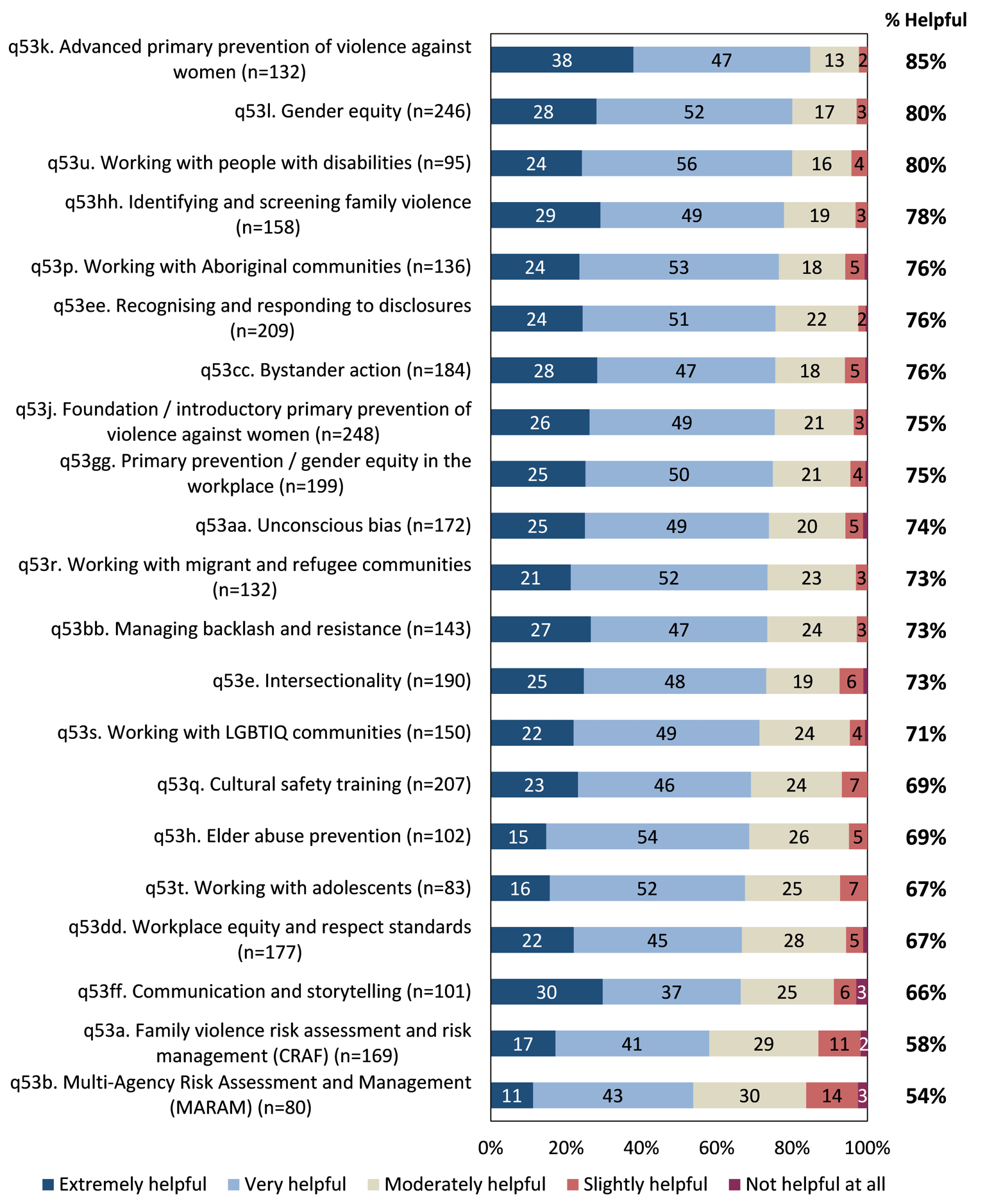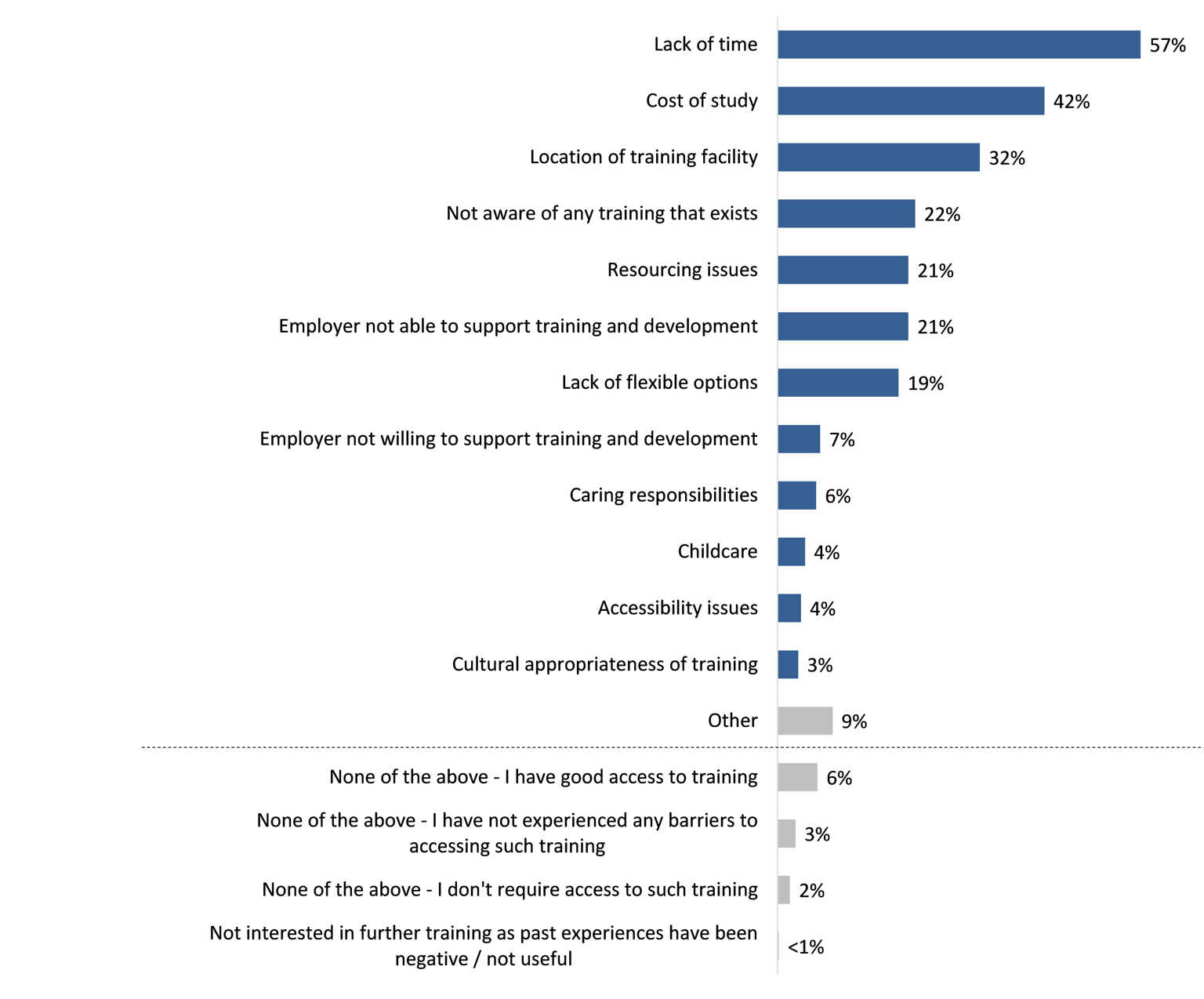The primary prevention workforce was asked to identify both the family violence prevention and response topics they had completed training in, and those they would like further training in.
As illustrated in Figure 14 , at least half of respondents had completed training in relation to:
- gender equity (59%);
- foundation / introductory primary prevention of violence against women (58%); and
- recognising and responding to disclosures (50%).
The topics which respondents felt they required further training in were generally those with lower completion rates, including training related to:
- working with Aboriginal communities (32% had completed training, 52% desired further training);
- MARAM (19% had completed training, 50% desired further training); and
- managing backlash and resistance (33% had completed training, 49% desired further training).
Those who had completed training in each topic area were then asked to assess the degree to which they believed the training had assisted them in undertaking their work more effectively. Figure 15 (see page 29) shows that perceived helpfulness was relatively high across most topic areas, and was highest in relation to training in:
- advanced primary prevention of violence against women (85% found training in this topic to be ‘extremely’ or ‘very’ helpful);
- gender equity (80%); and
- working with people with disabilities (80%).
In contrast, respondents were least likely to feel that training undertaken in the following topics was helpful:
- communication and storytelling (66% – although a notable proportion (30%) found training to be ‘extremely’ helpful);
- family violence risk assessment and risk management (CRAF – 58%); and
- MARAM (54%).
These results suggest that there is an opportunity to review and improve training in various topics, particularly those related to frameworks guiding the primary prevention workforce (e.g. CRAF and MARAM). This review may include further investigation into whether existing training offerings are fit for purpose, or whether they need to be adapted for the primary prevention workforce.
When asked about barriers to accessing further training and development in relation to family violence response or prevention, the three main barriers identified by respondents were:
- lack of time (57%);
- cost of study (42%); and
- location of training facility (32%).
Updated


